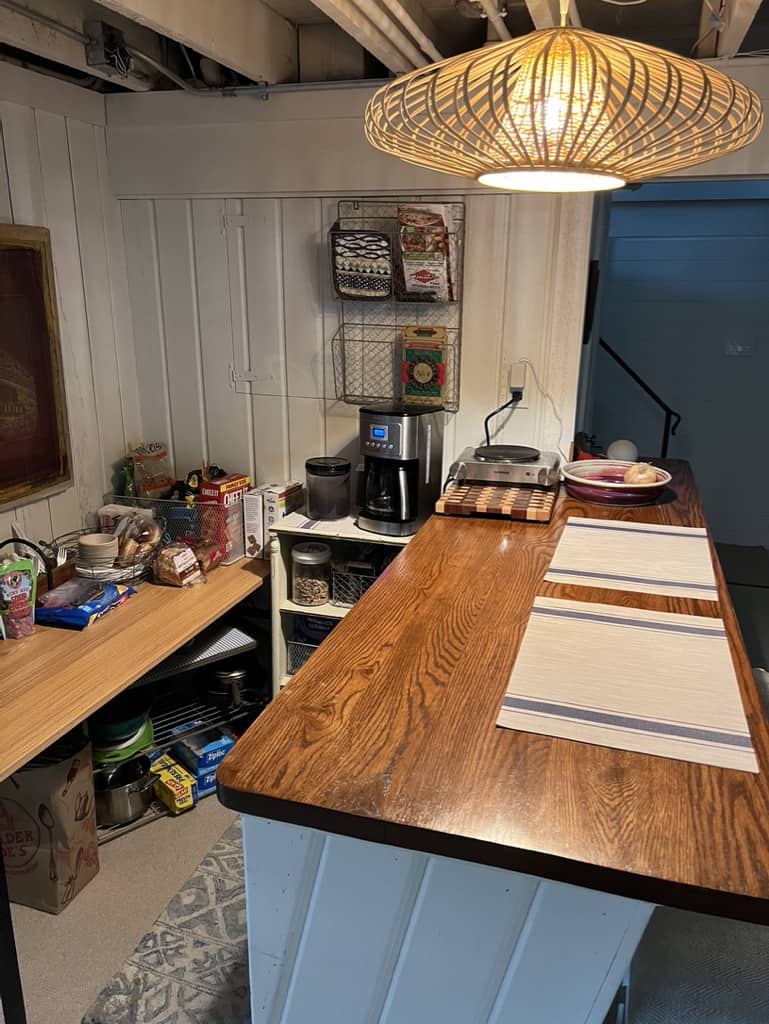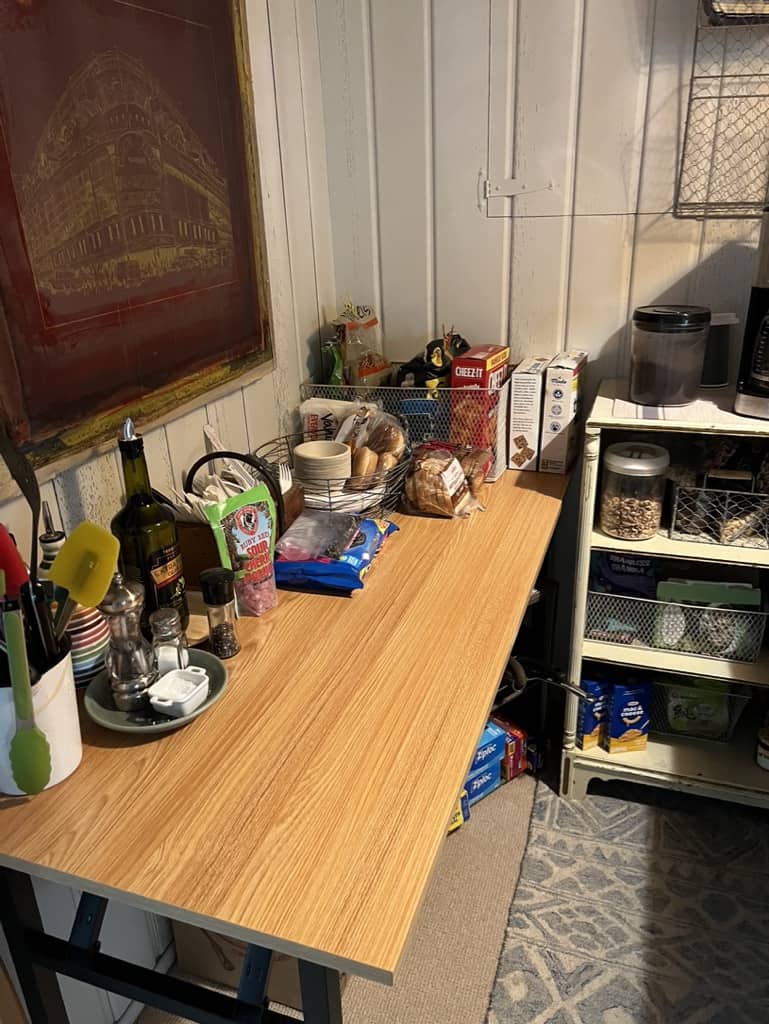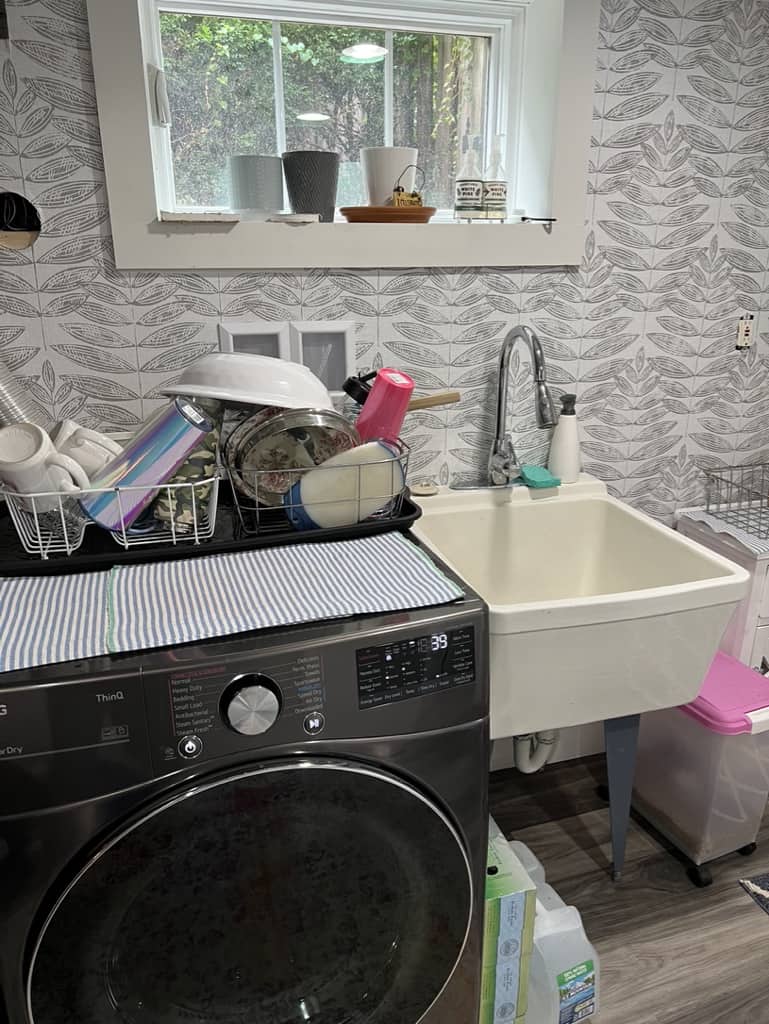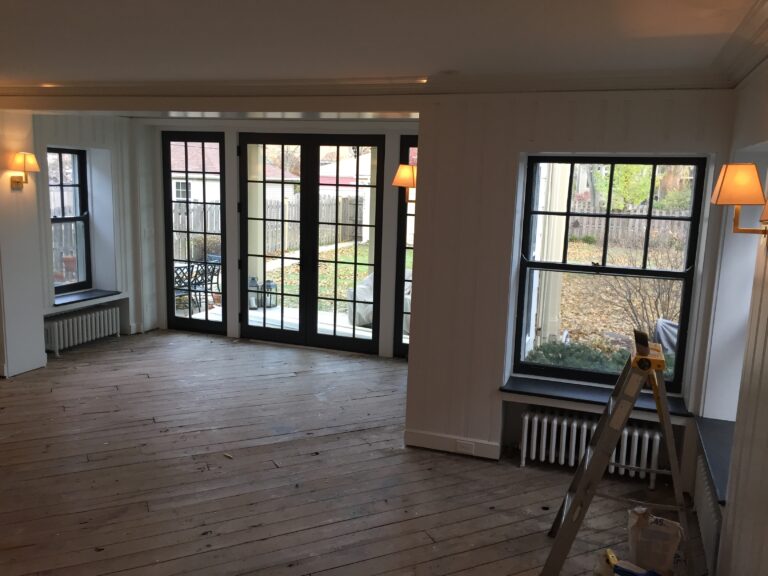We have been working on our kitchen remodel for nearly two years—with the rounds of plans with the architect, getting bids and coming back down-to-earth when we’d get the bids back. It’s been quite a process. When demo day finally came, the contractor had the cabinets out and in our back yard in 2 hours! The chaos had begun – and it lasted for four months. While it was longer than any of us anticipated, it honestly was not too painful. Through our process, I’ve consolidated five tips for you to have a successful kitchen remodel.
1. Timing — When To Remodel Your Kitchen
The timing of your remodel is key! We were originally scheduled to start in January, but then we had a hard time finding a cabinet maker. While I was just anxious to get going, that extra time benefited us in multiple ways. First, it allowed us to start in the summer. June 5th was “demo day” and the weather was beautiful – summer allowed our contractors to work fully outside, keeping noise and dust to a minimum. It allowed us to grill and sit on the porch to escape the noisiest days. I know it’s not always possible, but I highly recommend summer/fall for construction.
2. Get All Materials On Site
To avoid cost and time overruns, you ideally want your construction to operate on “waterfall” timing. This means that certain things need to happen before the next thing can happen. Since we didn’t start in January, we had picked out all our lighting, plumbing fixtures, hardware, appliances, etc. The extra time allowed us to get everything on site before they needed it.
Once it arrives on site, be sure to inspect it. If something was damaged in transit, you could still face a delay as you wait for the replacement. Waiting for one part could hold up the entire project. And, if there is even just a delay of 1-2 days, you could lose the subcontractors to other jobs. While we had most things on-site, we were putting a collapsing pocket door in the pantry – and realized late that the hardware mechanism had not been ordered. So, the cabinet company installed the kitchen, but had to wait for that hardware to be installed and the drywall finished before they could, take final measurements for the pantry shelves and cabinets. It delayed the project and subjected us to cost overruns and a new round of dust.
3. Pick A Contractor You Wouldn’t Mind “Moving In” with you.
Your contractor essentially moves in with you for 3-4 months, arriving at 7:30AM and working until 4:00PM every day. As you’re interviewing contractors, make sure they do good work, have an excellent reputation and that you like them. Be sure to meet their deputy if they are going to be on-site frequently. And while you probably can’t meet every subcontractor (electric, plumbing, heating, drywall, etc.) – good people attract good people, and there is a higher likelihood that you will like them as well. Think of it as if your house is having open-heart surgery — you want good people coming in and out.
4. Optimize Your Temporary Kitchen
A functional temporary kitchen will be one of the most important survival strategies during your remodel. I wrote a whole post on it here. We were fortunate that we had an old dry bar in the basement, adjacent to a laundry room with a sink, extra fridge, and freezer. If you don’t have an ideal space, your contractor can help set up a temporary kitchen for you. They can relocate your existing refrigerator, a few lower cabinets, etc.
You will need “surface area” to replicate counter space and you can create the same setup with 6-foot tables from Costco or Target. As you’re packing the old kitchen, prepare a box that is just essentials you use every day– 2-3 knives, a frying pan, a pot to boil water, toaster, your favorite spices and oils, etc. Then identify what appliances you’ll need. Our must-haves were the coffee maker, toaster, an electric hotplate and the microwave. Other less used appliances (food processor, slow-cooker, blender, etc.) were put away because we didn’t want those to take up valuable surface space but could be easily accessed if needed.



Even though we had a great sink in the laundry room, we knew we did not want to wash a lot of dishes. Our community has a composting program where they provide a full-size garbage can and pick up weekly. So, we invested in compostable plates, cereal-size bowls and forks/knives/spoons – so almost everything could be disposable, and we didn’t have to feel guilty about contributing to a landfill. Everyone had 1-2 items as their must-haves, and they committed to washing those. Mine was my favorite coffee mug.
5. Adjust Your Mindset
I didn’t go into this renovation thinking it would be an adventure, but that’s how I felt about it. It was more a change-of-pace than an inconvenience. We got very acquainted with our basement – which, other than laundry, was the kids’ domain. It felt like we were staying in someone’s apartment, and we had to be creative about what meals we made.
One particularly cold June night I decided I wanted to make vegetarian chili – this would typically take up the whole kitchen. Challenge accepted! With the one hot plate and little counter space, I bought some pre-sliced ingredients, opened cans of beans and tomatoes… et voila! The chili hit the spot, and everyone was impressed, including me!
Good luck – you got this! Hopefully these five tips will help you on your way to a successful kitchen remodel. Trust me, it will be so worth it in the end.
WETSU! WETSU!
XO JT





